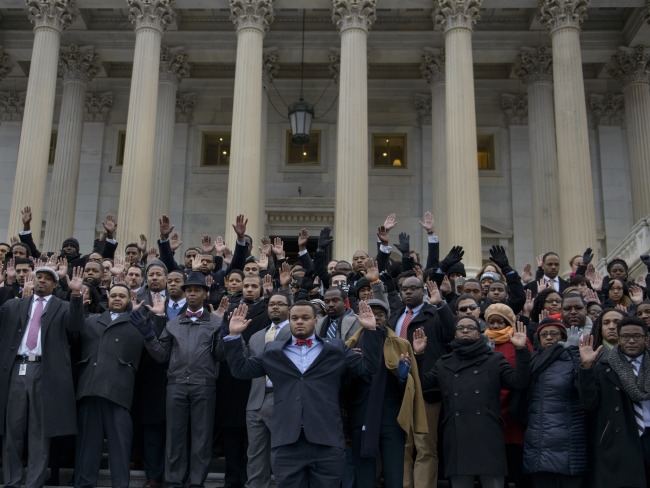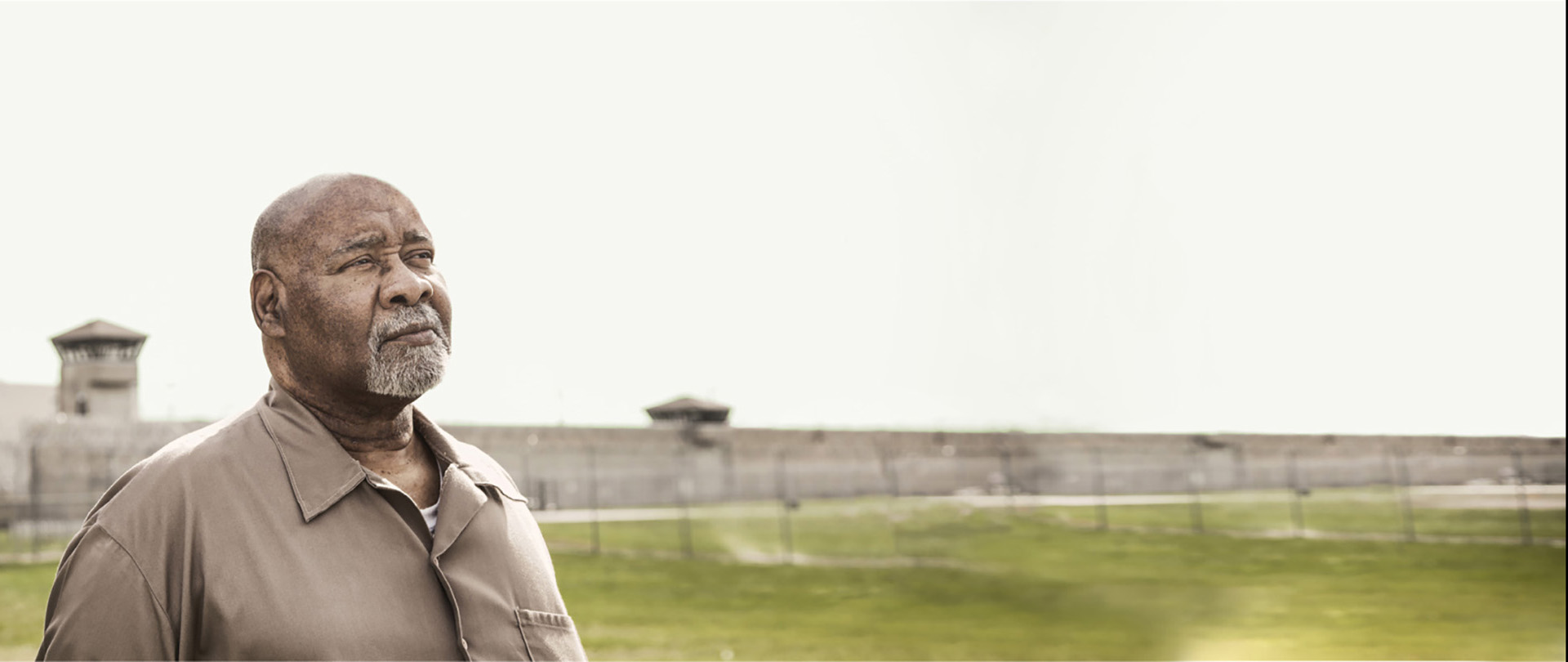Black Lives Matter: Eliminating Racial Inequity in the Criminal Justice System
Like an avalanche, racial disparity grows cumulatively as people traverse the criminal justice system. This report identifies four key features of the criminal justice system that produce racially unequal outcomes and showcases initiatives to abate these sources of inequity in adult and juvenile justice systems around the country.
Related to: Racial Justice

Executive Summary
“Every time you see me, you want to mess with me,” Eric Garner told the group of approaching New York City police officers. As they wrestled him to the ground to arrest him for selling untaxed loose cigarettes, an officer placed Garner in a chokehold and maintained his grip despite Garner’s pleas for air. One hour later, Garner was pronounced dead. The unarmed black man’s death and the white officer’s non-indictment despite videotape evidence have heightened concerns about police practices and accountability. In the wake of the fatal police shooting of unarmed teenager Michael Brown in Ferguson, Missouri, and that officer’s non-indictment, a growing number of Americans are outraged and demanding change.
“Black lives matter” has become a rallying cry in light of evidence that the criminal justice system is failing to uphold this basic truth. Official data, although woefully inadequate,1 show that over half of those killed by police in recent years have been black or Latino.2 Officers involved in these killings are rarely indicted, much less convicted, for excessive use of force.3 And official responses to recent protests have spurred further controversy: militarized police forces disrupted public assemblies in Ferguson,4 and New York City’s police union blamed pro-reform politicians and nonviolent protesters for the killing of two officers by a mentally unstable man.5
The criminal justice system’s high volume of contact with people of color is a major cause of African Americans’ disproportionate rate of fatal police encounters, as well as of broader perceptions of injustice in many communities. This briefing paper identifies four key features of the justice system that contribute to its disparate racial impact, and presents recent best practices for targeting these inequities drawn from adult and juvenile justice systems around the country. In many cases, these practices have produced demonstrable results.
Policing is by no means the only stage of the justice system that produces racial disparity. Disadvantage accumulating at each step of the process contributes to blacks and Latinos comprising 56% of the incarcerated population, yet only 30% of the U.S. population.6 The roots of this disparity precede criminal justice contact: conditions of socioeconomic inequality contribute to higher rates of some violent and property crimes among people of color. But four features of the justice system exacerbate this underlying inequality, and jurisdictions around the country have addressed each one through recent reforms.
Many ostensibly race-neutral policies and laws have a disparate racial impact. Police policies such as “broken windows” and stop, question, and frisk have disproportionately impacted young men of color. Prosecutorial policies, such as plea bargain guidelines that disadvantage blacks and Latinos compound these disparities, as do sentencing laws that dictate harsher punishments for crimes for which people of color are disproportionately arrested.
One reform to address this source of disparity in policing is the significant retrenchment of “stop and frisk” in New York City after a court ruled that the policy violated the constitutional rights of blacks and Latinos. Recent legislation reducing the sentencing disparity between the use and distribution of crack versus powder cocaine in California, Missouri, and at the federal level are examples of efforts to tackle sentencing inequalities.
Criminal justice practitioners’ use of discretion is – often unintentionally – influenced by racial bias.
Racial disparities in traffic stops have diminished on a nationwide basis in recent years, but persist in many jurisdictions. Police officers are more likely to stop black and Hispanic drivers for investigative reasons. Once pulled over, people of color are more likely than whites to be searched, and blacks are more likely than whites to be arrested. In jurisdictions like Ferguson, these patterns hold even though police have a higher “contraband hit rate” when searching white versus black drivers. Prosecutors and judges also often treat blacks and Hispanics more harshly in their charging and sentencing decisions.
The Vera Institute of Justice’s work with prosecutors’ offices around the country is one initiative addressing bias in charging decisions by monitoring outcomes and increasing accountability. Similarly, judges in Dorchester, Massachusetts, have worked with police and prosecutors to develop guidelines to reduce racial disparities in charging enhancements for people arrested for drug crimes in a school zone.
Key segments of the criminal justice system are underfunded, putting blacks and Latinos – who are disproportionately low-income – at a disadvantage.
Most states inadequately fund their indigent defense programs. Pretrial release often requires money bond, which can be prohibitive to low-income individuals and increases the pressure on them to accept less favorable plea deals. Many parole and probation systems offer supervision with little support. Public drug treatment programs are also underfunded, thereby limiting treatment and sentencing alternatives for low-income individuals.
New Jersey’s recently overhauled bail laws, which will increase nonmonetary release options, is an effort to create a more even playing field for low-income individuals. In Illinois, the expansion of alternative community programs has helped to nearly halve reliance on secure detention for youth.
Criminal justice policies exacerbate socioeconomic inequalities by imposing collateral consequences on those with criminal records and by diverting public spending.
A criminal conviction creates a barrier to securing steady employment, and those with felony drug convictions are disqualified from public assistance and public housing in many areas. In addition, allocating public resources to punitive programs comes at the expense of investments in crime prevention and drug treatment programs. Because of their higher rates of incarceration and poverty, people of color are disproportionately affected by these policy choices.
A key development in this area is California’s reclassification of a number of low-level offenses from felonies to misdemeanors under Proposition 47 in 2014. This initiative is intended to reduce prison admissions and to spare many low-level offenders the collateral consequences of a felony conviction. The law also redirects a portion of state prison savings – estimated to be $150-$250 million annually – to crime prevention and drug treatment programs.
| 1. | The actual number of police killings was about 45% higher than the FBI’s tally for the nation’s 105 largest police departments between 2007 and 2012, see: Barry, R. & Jones, C. (2014). Hundreds of Police Killings Are Uncounted in Federal Stats. The Wall Street Journal. See also: Fischer-Baum, R. (2014). Nobody Knows How Many Americans The Police Kill Each Year. FiveThirtyEight Politics; Klinger, D. (2014). On the Problems and Promise of Research on Lethal Police Violence: A Research Note. Homicide Studies, 16(1), 78–96. |
|---|---|
| 2. | Bureau of Justice Statistics (2011). Arrest-Related Deaths, 2003-2009—Statistical Tables. (p. 6, Tbl. 6). In recent years, police officers have killed African American teenage boys at 21 times the rate of their white counterparts, according to an analysis of the FBI Supplementary Homicide Report, see: Gabrielson, R., Jones, R., & Sagara, E. (2014). Deadly Force, in Black and White. ProPublica. |
| 3. | McKinley, J. & Baker, A. (2014). Grand Jury System, With Exceptions, Favors the Police in Fatalities. The New York Times. |
| 4. | Gibbons-Neff, T. (2014). Military Veterans See Deeply Flawed Police Response in Ferguson. The Washington Post. |
| 5. | Goldenberg, S., Pazmino, G., & Paybarah, A. (2014). Police Union Declares War on de Blasio After Murder of Officers. Capital. Note that police deaths in the line of duty are at a historical low, see: Federal Bureau of Investigation (2014). FBI Releases 2013 Statistics on Law Enforcement Officers Killed and Assaulted, 2014; National Law Enforcement Officers Memorial Fund (2014). Preliminary 2014 Law Enforcement Officer Fatalities Report. Washington, D.C. |
| 6. | U.S. Census Bureau (2014). State and County QuickFacts; Carson, E. (2014). Prisoners in 2013. Bureau of Justice Statistics. (p. 8, Tbl. 7); Minton, T. & Golinelli, D. (2014). Jail Inmates at Midyear 2013—Statistical Tables. Bureau of Justice Statistics. (p. 6, Tbl. 2). |


